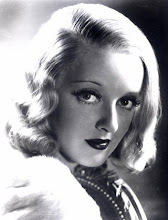Through both the cinematography and the mise-en-scène, Kalin puts the audience into the time period of the film while simultaneously taking them out of it. The grainy black-and-white film stock is reminiscent of that which was used in films shot during the 1920s, while occasional extreme angles or use of a handheld camera give the film a more modern feel. Likewise, anachronisms such as a black female stenographer (at the time of the court case, the position was held only by white males) and technology that was unavailable in the 20s, such as touch-tone phones, were used very deliberately and effectively. Taken together, these choices give the audience the dichotomous feelings of watching events unfold as they happen and seeing them with the perspective granted by hindsight.

One of the most interesting scenes in the film comes in the aftermath of the crime. After they are arrested thanks to evidence left at the scene by the perpetually anxious Nathan, the killers are questioned separately and turn on each other. Once they are reunited, each tries to convince the investigators that he had been driving the car while his partner committed the murder in the backseat. They both stick to their stories so firmly that it's impossible to discern which of them is lying; in a tense moment, however, Dickie slips up and "forgets" that he had supposedly been driving. He uses his natural charms to cover his tracks, and both he and Nathan are charged with murder, but the film conclusively indicates that he was the more guilty party.
According to Tom Kalin, who spoke with our class a few weeks after we screened this film, that scene was taken directly from the court transcripts. The film's story grew out of the moment when Richard Loeb inadvertently identified Nathan Leopold as the driver of their car, implying that he himself had been in the backseat with the victim. After reading that part of the transcript, Kalin was convinced that Loeb had been the one to actually take the boy's life, and wrote the movie from that perspective. As a writing student as well as a film student, I found it very interesting to think about the entire film having spiraled out of this one defining moment of truth. The next time I see the movie, I will definitely be thinking about how it leads up to and away from that revelation.




